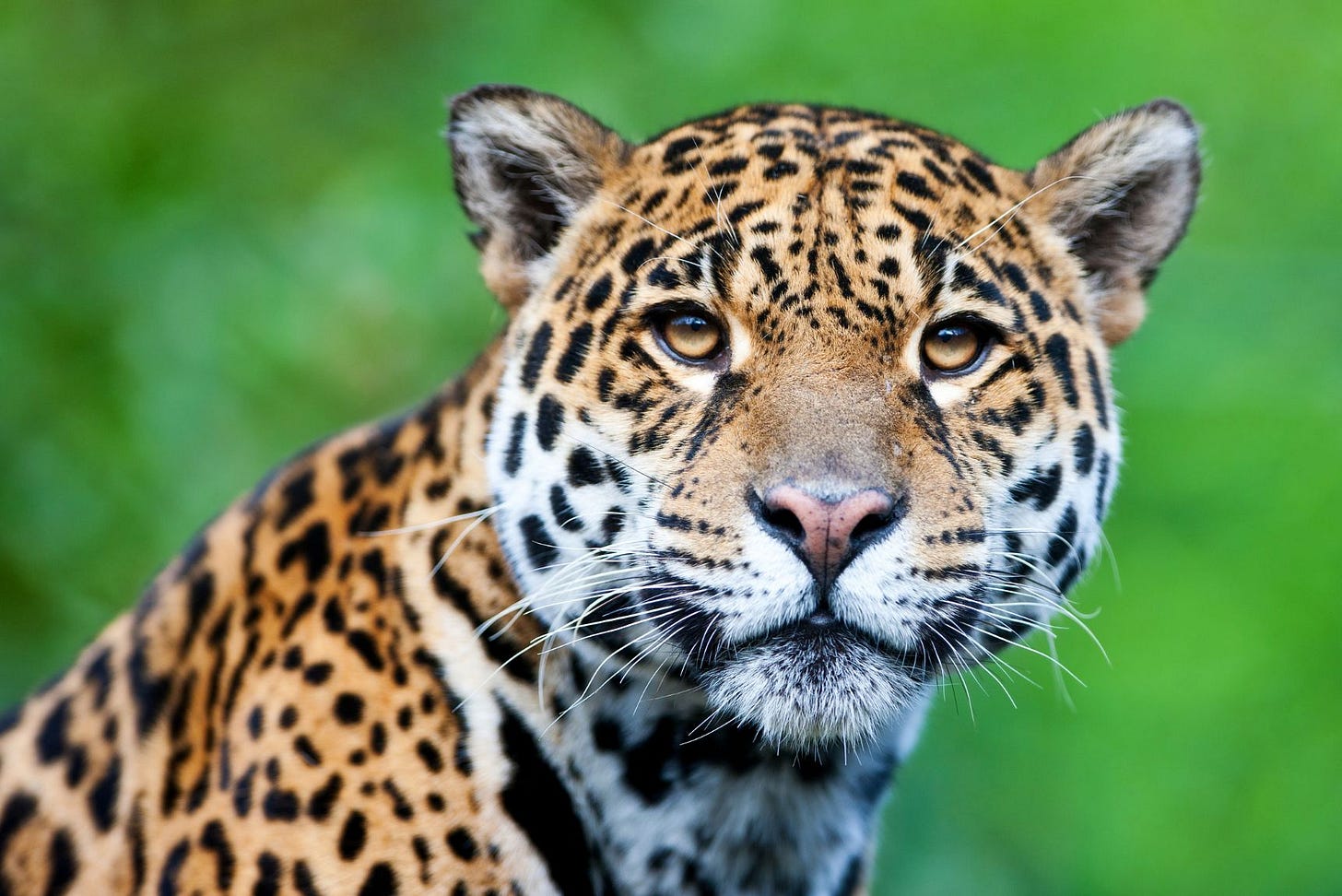Good News #17
Jaguar reintroduction in Argentina, ecological restoration in British Columbia, cleaner beaches in Australia, shipping pallets made of coconut husks, and a climate partnership between China and the EU
First wild-born jaguar cub sighted in the Argentine Chaco
Nature guides in Argentina’s El Impenetrable National Park have spotted a jaguar cub — the first wild-born cub in the Gran Chaco region since a rewilding program began in 2019. Researchers had suspected a birth after finding paw prints and other signs, but confirmation came on July 30 when the guides observed the cub with its mother Nalá on the bank of Bermejo River. This sighting represents a milestone for jaguar recovery in northern Argentina, where the species has lost over 95% of its range and only 200-300 individuals remain.
Rewilding Argentina began the rewilding program in response to the near extinction of jaguars in Gran Chaco, where previously fewer than 10 males were known to survive, and no females had been seen since 1990. Since then, three female jaguars have been reintroduced — including Nala in 2024. Success in Gran Chaco follows similar efforts in Iberá National Park, where the jaguar population has reached 35-40 individuals across three generations after being reintroduced to an area where they had been gone for 70 years. These initiatives offer a promising blueprint for jaguar recovery throughout northern Argentina.
Indigenous-led restoration project in British Columbia
The Lower Similkameen Indian Band (LSIB), led by women and Elders, has undertaken restoration of nʔaysnúlaʔxwsnxaʔcnitkw (the Ashnola Watershed), located in British Columbia’s South Okanagen. Wildfires destroyed 44,000 hectares of the area in 2023.
Rejecting profit-driven restoration — like monoculture tree farms — LSIB has planted traditional food and medicine plants to restore biodiversity and strengthen cultural resilience. The community got started as soon as the embers of the 2023 wildfire burned out, and were soon joined by local restoration companies, artists, and non-profits.
Participants have already planted 846,000 trees and 27,500 plants. They have also created nest boxes, bat houses, rattlesnake hibernaculums and raptor platforms. By planting on mountain slopes and riverbanks, they are preventing erosion and protecting the watershed from runoff. Their efforts represent a model for healing land: addressing climate change impacts, supporting wildlife, protecting water, and preserving Indigenous traditions.
Australia’s beaches are way cleaner than they were a decade ago
New research shows that Australia’s coastal beaches have 40% less plastic pollution than they did a decade ago. Efforts such as beach clean-ups, bans on single-use plastics, expanded recycling programs, and deposit schemes for beverage containers have played a vital role in minimizing litter. This progress not only makes Australian beaches safer and more enjoyable for visitors, but it is critical for the preservation of marine wildlife. Marine plastic pollution affects 800 species worldwide
Experts emphasize that continued action is essential to keep up the momentum. Preventing plastic pollution in the first place — through policy, education, and individual actions — proves far more effective and economical than cleanup alone. Sustained commitment from governments, industry, and individuals will be key to further cleaning and preserving coastal environments and safeguarding biodiversity for generations to come.
Coconut husk pallets reduce environmental footprint of shipping
A Dutch company named CocoPallet has developed biodegradable shipping pallets made of discarded coconut husks. These coco pallets could replace millions of wooden pallets used in Asia — keeping mature trees from being harvested. By utilizing agricultural waste that would otherwise be burned or left to rot, coco pallets reduce GHG emissions. And because coconut husks contain natural binding properties, the pallets can be made without glue, nails, or chemical additives.
The use of coconut husk pallets could significantly reduce the environmental footprint of global logistics, as millions of trees are currently cut for single-use wooden pallets. The pallets’ biodegradability allows them to be converted into soil improvers at the end of their life cycle, promoting a circular economy. While the technology holds promise, challenges remain in terms of cost competitiveness, regulatory acceptance, and the need for updated warehouse handling systems. Nevertheless, success in Asia could inspire similar innovations worldwide.
China and the EU partner on climate action
At the recent EU-China Summit in Beijing, leaders from China and the EU emphasized the importance of sustained cooperation and policy stability among major economies to effectively tackle climate change. Both parties reaffirmed their commitment to the principles and goals of the United Nations Framework Convention on Climate Change (UNFCCC) and the Paris Agreement, stressing the need for action based on common but differentiated responsibilities and respective national capabilities.
Together, China and the EU pledged to advance their green partnership through concrete and results-oriented measures. Key commitments include supporting global renewable energy deployment, enhancing adaptation efforts, and ensuring access to green technologies for all nations, particularly developing countries. Both sides also agreed to submit comprehensive climate plans (NDCs) before COP30, collaborate on green technologies, and support Brazil in hosting a successful COP30, all with the aim of driving a just and inclusive global transition toward sustainability and low-carbon development.



